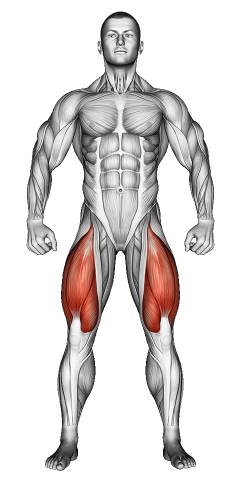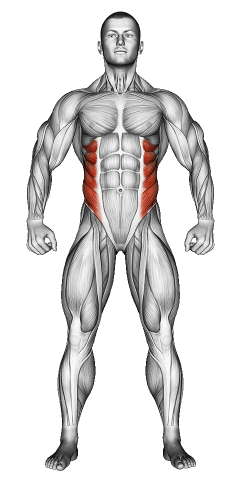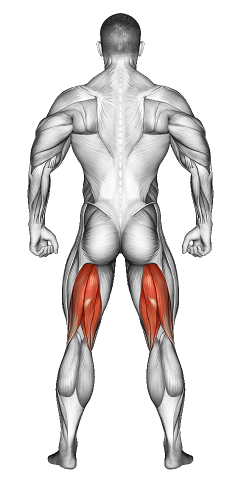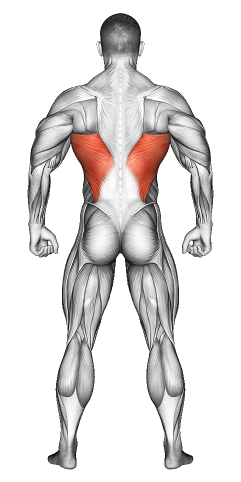Revolved Lunge Pose (Parivrtta Anjaneyasana): Video Tutorial & Yoga Guide

Written By: Claude Michael
Updated: Jan 14, 2025
| Workout | Revolved Lunge Pose (Parivrtta Anjaneyasana) |
| Primary Muscle Group | Quads |
| Secondary Muscle Group | Obliques, Hamstrings, Lats |
| Equipment Required | None |
| Force Type | Bodyweight |
| Mechanics | Flexibility and Stability |
| Exercise Type | Yoga and Core Strength |
| Difficulty | Intermediate |
Revolved Lunge Pose (Parivrtta Anjaneyasana): Video Tutorial & Yoga Guide
- 1.Revolved Lunge Pose (Parivrtta Anjaneyasana): Muscle Groups
- -1.1Primary Muscle Group
- -1.2Secondary Muscle Group
- 2.Revolved Lunge Pose (Parivrtta Anjaneyasana): Step-by-Step Guide
- 3.Revolved Lunge Pose (Parivrtta Anjaneyasana): Overview
- 4.Revolved Lunge Pose (Parivrtta Anjaneyasana): Benefits
- 5.Revolved Lunge Pose (Parivrtta Anjaneyasana): Pro Tips & Advanced Techniques
- 6.Revolved Lunge Pose (Parivrtta Anjaneyasana): Progression Plan
- 7.Revolved Lunge Pose (Parivrtta Anjaneyasana): Frequently Asked Questions (FAQs)
Secondary Muscles Group
Revolved Lunge Pose (Parivrtta Anjaneyasana): Step-by-Step Guide
- Step 1: Start in a Low Lunge. Place your right foot forward, keeping your knee stacked above your ankle. Extend your left leg straight back with your toes tucked under. Keep your hands on your hips for balance.
- Step 2: Bring your hands to prayer. Press your palms togClaude at your heart center. Lengthen your spine as you inhale, creating space through your torso.
- Step 3: Twist your torso. On your exhale, rotate your upper body to the right. Hook your left elbow outside your right knee, using it as leverage to deepen the twist.
- Step 4: Press firmly through your palms. Push your top hand into your bottom hand to open your chest and intensify the twist. Keep your gaze over your right shoulder or upward if it feels comfortable.
- Step 5: Engage your core and legs. Stay strong in your legs by pressing through your front heel and back toes. Use your core to stabilize your balance.
- Step 6: Hold the pose. Stay here for 3-5 breaths, deepening the twist with each exhale. Keep your hips level and your spine long.
- Step 7: Release and switch sides. Inhale to return to a neutral lunge, then step back to Downward Dog or another pose before repeating on the other side.
Revolved Lunge Pose (Parivrtta Anjaneyasana): Overview
The Revolved Lunge Pose (Parivrtta Anjaneyasana) strengthens your legs and core while stretching your spine, chest, and hip flexors. This twist improves digestion, enhances balance, and increases spinal mobility. It promotes focus, detoxification, and a sense of stability and grounding.
Revolved Lunge Pose (Parivrtta Anjaneyasana): Benefits
The Revolved Lunge Pose offers numerous benefits. It strengthens the core and legs while stretching the spine, shoulders, and hips. This pose improves balance and stability, enhances digestion by massaging internal organs, and increases flexibility in the spine and torso.
Revolved Lunge Pose (Parivrtta Anjaneyasana): Pro Tips & Advanced Techniques
- Keep Your Hips Level: Avoid letting one hip drop or twist. Keep your pelvis steady.
- Use Your Core: Engage your abs to support your lower back and maintain stability.
- Breathe Deeply: Use your breath to deepen the twist without forcing it.
- Modify if Needed: Lower your back knee to the mat for more stability if balancing feels difficult.
Revolved Lunge Pose (Parivrtta Anjaneyasana): Progression Plan
Beginner
Intermediate
Advanced
Revolved Lunge Pose (Parivrtta Anjaneyasana): Frequently Asked Questions (FAQs)
What does Revolved Lunge Pose work on?
+It strengthens your core and legs while improving balance and spinal flexibility.
Is Revolved Lunge Pose suitable for beginners?
+Yes, beginners can modify by lowering the back knee and practicing a gentler twist.
How long should I hold this pose?
+Hold for 3-5 breaths or as long as you feel steady and comfortable.
What should I avoid in this pose?
+Avoid collapsing your chest or forcing the twist. Keep your movements controlled and your alignment steady.
Can this pose improve digestion?
+Yes, the twisting motion gently massages the abdominal organs, promoting digestion.
Share
Don’t Wish for It, Work for It – Join the FlexXP Newsletter Today!
Thank you for signing up for the FlexXP Newsletter!
This site is protected and the Google Privacy Policy and Terms of Service apply.



